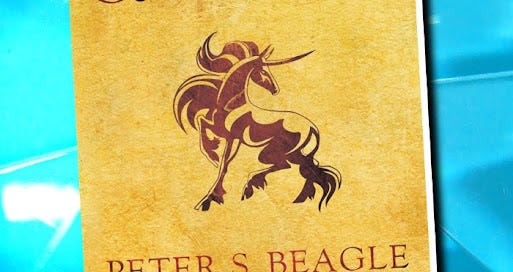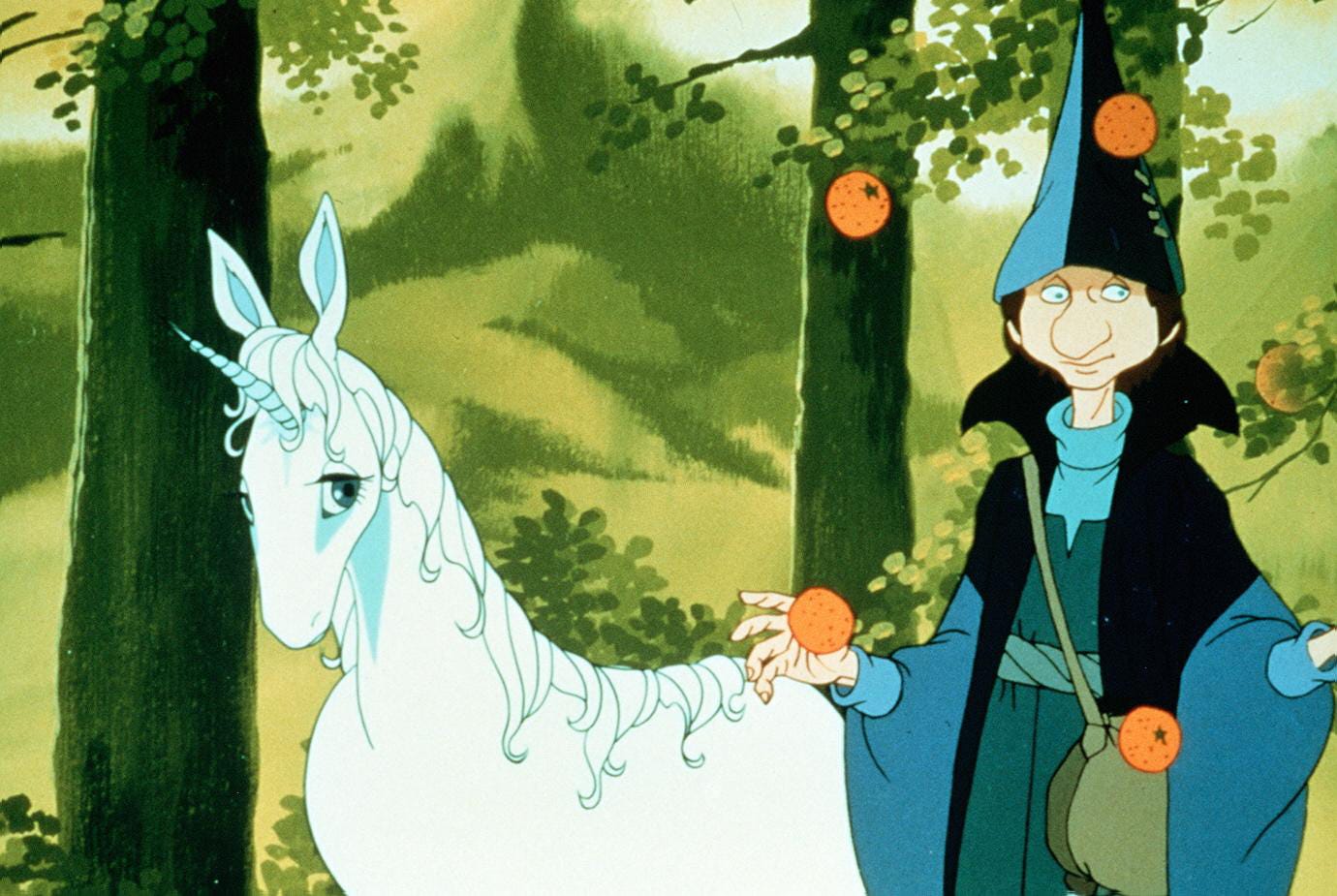During a book circle a few years ago, we were discussing THE LAST UNICORN (1968) by Peter S. Beagle… and someone commented that modern Fantasy literature went in two separate directions with C. S. Lewis and J.R.R.Tolkien.
C. S. Lewis allowed for inconsistencies, whimsy and ”flights of fancy,” and used the ”magic portal” trope to connect the fantasy world to reality – like traditional fairy tales do. And he mixed it up: Santa Claus makes a guest appearance in the Narnia books, together with other fantastical beings from different traditions.
Tolkien, on the other hand, did away with the ”magic portal” and created an imaginary world to exist independently of reality (sort of). His fantasy epic was, in a way, much less whimsical and tried quite hard to be internally consistent (hence all the “lore” — and THE SILMARILLION).
So the argument here goes that Fantasy literature branched into a “whimsical” stream and a “Tolkien-ish” stream.
I would also argue that Tolkien’s approach to Fantasy laid the groundwork for Fantasy RPGs (Role-Playing Games). Games need strict rules and clearly defined settings to function; the whimsical approach goes against that.
The novel THE LAST UNICORN (1968) definitely falls in the category of ”whimsical” fantasy. It's self-referential, ironic and inconsistent. It seems to point forward to works like William Goldman’s THE PRINCESS BRIDE (1973) and SHREK (or even the movie TIME BANDITS).
The plot is fairly simple: A magical unicorn hears that she is the last of her kind, and goes on a quest to find other unicorns. She meets a failed wizard, they have various adventures (some of them comical), explore a cursed castle … and eventually the story ends ”happily” but on an ambiguous note.
Despite its whimsy, irony and self-awareness, this book is well written – often beautifully so. I enjoyed it not so much because of its originality, but because the writing was good. Also, the story's lack of self-importance felt refreshing in an era of pompous ”epic” fantasy books. It didn't pretend to be ”important” or ”weighty.”
THE LAST UNICORN is an early example of the ”postmodern” fairytale which is now commonplace in popular media. I recommend it as light entertainment for all ages.
See also: The 1982 animated feature THE LAST UNICORN.




